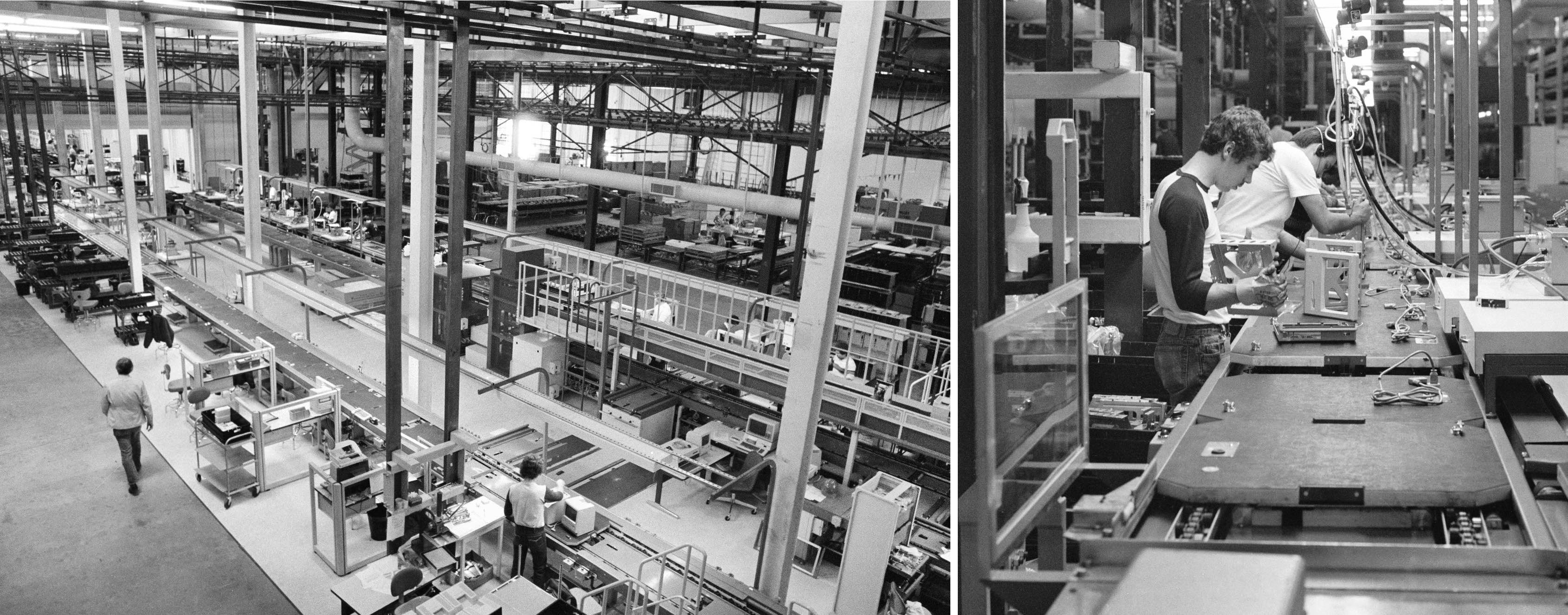
Apple’s been criticized by the Trump administration for not trying harder to bring those manufacturing jobs back to the United States. In the Eighties, it was running an advanced, automated Macintosh manufacturing plant in Fremont, California. So, what went wrong?
Titled “When Apple Was Homegrown” in the print edition of The New York Tims and bylined by reporter John Markof, the fascinating write-up explores late CEO Steve Jobs’s focus on creating a manufacturing culture in Silicon Valley.
Apple’s manufacturing operations in California were to be highly advanced, using automation and advanced equipment. They were to be so cutting-edge that factory labor would account for just two percent of the cost of making a Macintosh.
Apple’s co-founder, Steve Jobs, had an abiding fascination with the tradition of Henry Ford and the original mass manufacturing of automobiles in Detroit, as well as the high-quality domestic manufacturing capabilities of Japanese companies like Sony. But his efforts to replicate either in California were examples of his rare failures.
Apple began the construction of a cutting-edge plant where its new Macintosh computer would be built back in 1983. Located just across San Francisco Bay from Apple’s Cupertino headquarters, it was supposed to be a factory with just-in-time delivery of zero-defect parts.
Jobs himself personally oversaw the construction of the facility.
Sadly, the Macintosh facility in California lasted just eight years because the company would eventually came to the realization that offshoring of manufacturing jobs meant a complex web of suppliers and the entire ecosystem had already moved to Asia.
Ultimately, the Macintosh factory closed in 1992, in part because it never realized the production volume Jobs had envisioned—such sales numbers for Macs would only come later. So, the story of Silicon Valley’s success turned out to be the ability of a company like Apple to devise manufacturing supply chains that stretch all the way around the globe, taking advantage of both low-cost labor and lax environmental regulations.
Pushed out of Apple, Jobs went on to found Next Inc. and design another plant.
In 1990, just a mile and half from where he had built the original Mac factory, he created another $10 million one to manufacture his Next Inc. personal workstation. Like the early Macintosh, however, he was never able to make flashy jet-black Next machines in quantities to support a Silicon Valley-based assembly operation.
That failure taught Jobs the lesson. He returned to Apple in 1997, and the next year, he hired Tim Cook as Apple’s Senior Vice President for Worldwide Operations. Mr. Cook had mastered the art of global manufacturing supply chains, first in IBM’s personal computer business and then at Compaq Computer.
“When I started my career, all my flights were to Japan,” said Tony Fadell, one of Apple’s hardware designers who worked on the original iPod and iPhone. “Then all my flights went Korea, then Taiwan, then China.”
When Mr. Jobs fell ill and had to take a leave of absence in 2009, he appointed Mr. Cook as the company’s future chief executive. It was a significant statement about the nature of Silicon Valley and what the mature computing industry there looked like. The dream of manufacturing computers at scale in California was basically abandoned.
The offshoring didn’t mean the death of Silicon Valley as pundits predicted at the time because—faced with the harsh realities of running domestic manufacturing operations on a global scale—the region reinvented itself as the industrial and software design capitol of the world.
Unlike Detroit’s automotive model of the mid-20th century, relatively few middle-class jobs were created and the region is marked by a vast concentration of wealth in the upper, white-collar reaches. Hourly workers routinely commute more than 100 miles to their support-staff jobs in the Valley, $100,000 Teslas are a common sight and the median price of a home in Fremont—the former site of Mr. Jobs’s ill-fated factories—is $1.1 million.
The Fremont facility, along with another one in Tennessee, was later used for the production of the cylindrically-shaped Mac Pro enclosure and finally assembly of that product.
Following Steve Jobs’s passing on October 5, 2011, Fremont City Council representatives meet to discuss the historical significance of the Steve Jobs-designed factory but ultimately abandoned the idea because the building wasn’t old enough to meet federal criteria for a historic designation.
Photographs: Terrence McCarthy for The New York Times